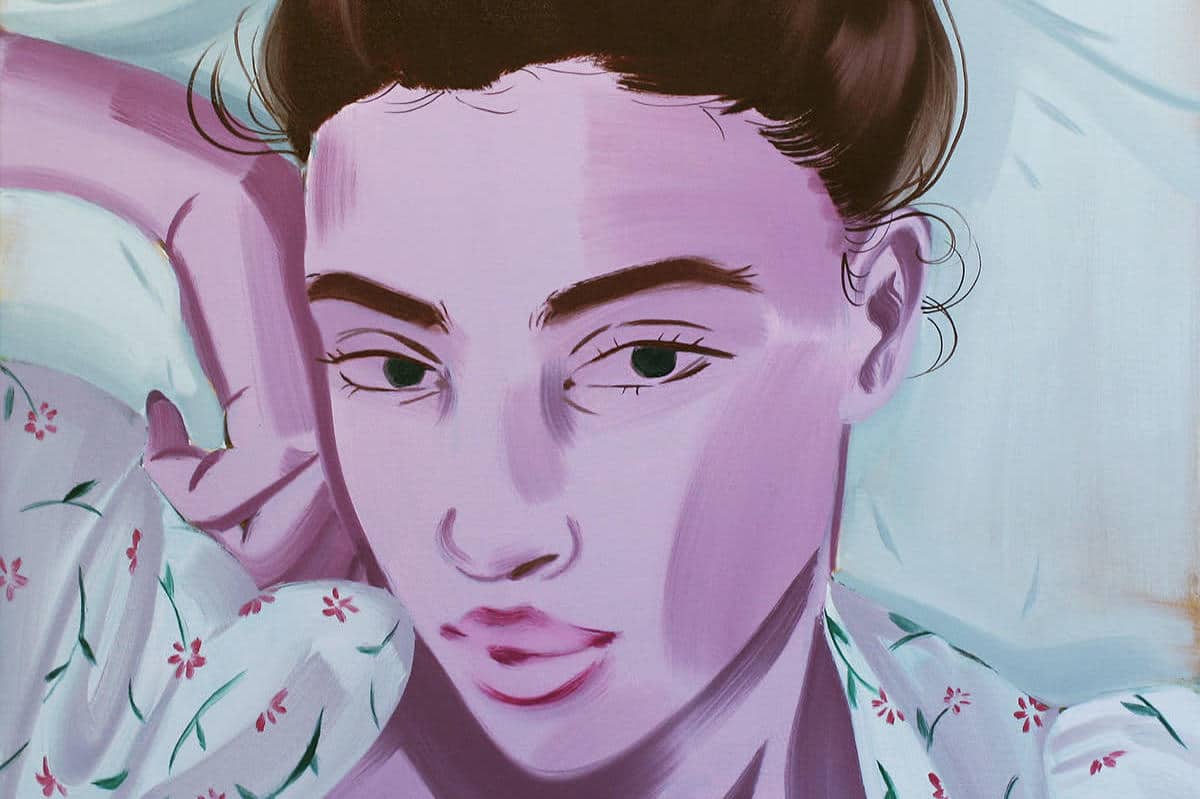Known for her vibrant, challenging portraits of women, Toronto-based painter Sarah Letovsky studied literature before earning her art degree. Her love of the classics has transformed into a passion for visual storytelling. Like her literary hero Alice Munro, Letovsky seeks to expose the inner life and turmoil of her female subjects. Going beyond simple representations, her paintings are heavy with emotional and psychological weight.
Inspired by Instagram feeds and selfie culture, Letovksy’s current exhibition I Like For You to be Still explores women taking ownership over their own image. Currently on view at Toronto’s Project Gallery until September 30th, the exhibition features bold, sensual paintings of women in intimate poses. Flipping the idea of the passive muse, the women in these paintings are as daring as Letovsky’s color palette and as confident as her brushstrokes.
We caught up with the painter in Toronto to talk about her creative process and inspirations. Build your own portfolio website to start your own visual storytelling career.
Format Magazine: Hi Sarah! Can you tell us about your background and how you got into painting?
Sarah Letovsky: As a kid, I always loved art and drawing. That was all I did and all I was interested in. In high school I’d always be at the back of the class drawing. I decided to do my undergrad at King’s [College, Halifax] in classics. I feel like there I got the base I needed to think about art and make art from my own experience and draw from literature, art, etc.After King’s I came back to Toronto, travelled a bit, and then I decided to go to OCAD and do a drawing and painting degree.
Do you find that your background in literature plays into your painting practice now?
Definitely. I’m a huge reader and I love female authors. There are some men who can write female characters well, but there some female authors I follow who I feel write the internal dialogue, the internal experience, the mundane life of a woman so well. It’s fascinating to me. Especially Alice Munro. I feel the paintings I make are like short stories in a way. There’s so much going on in the painting, there’s so much internal turmoil going on in a portrait. It feels like a short story or novella in a way.
The more that I paint, the more I realize that I’m trying to explore who I am without actually painting a self portrait.
What draws you to portraiture painting?
I’m interested in the female form and the female face. I think there’s so much subject there and I’ve always loved drawing it. There are so many challenges in the face. Like, if you don’t do the mouth quite right it has a different tone, a different vibe.
When you’re painting, you’re trying to find a part of yourself, in a way. The more that I paint, the more I realize that I’m trying to explore who I am without actually painting a self portrait. I think you can’t help but put yourself in what you are painting.
I’m interested in the people around me and what their inner feelings of turmoil are. Feelings of guilt and love and complexity and insecurity and everything that’s going on inside and how that comes out in the way you present yourself to the world. How can you portray that there’s something beneath the surface with someone captured in a mundane moment?
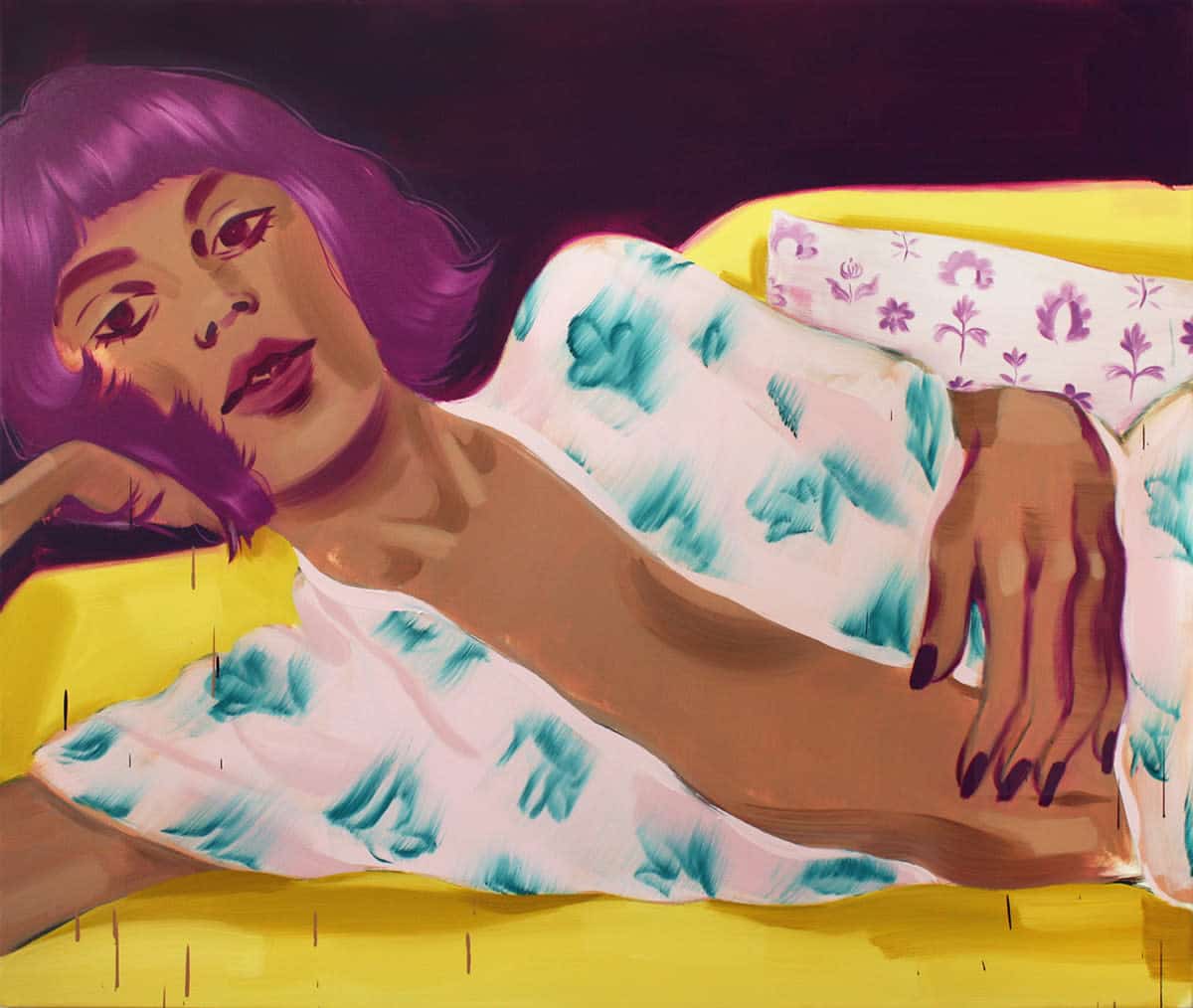
Woman in a Pink Robe (After Matisse), 2018.
What about the people, the subjects you are making paintings of? Looking at your recent show, all of the paintings are of women of a certain age.
I think I’m trying to understand my own experience. I think that the way we navigate the world can be very specific as a woman, at least in my own experience. I know that John Berger talks about this in Ways of Seeing; how you’re often out in the world, experiencing other people looking at you. I wouldn’t necessarily call it an insecurity, but I think that a lot of women are aware of their appearance and the way they conduct themselves differently from men. I’m not excluding trans women from that experience at all; I think there is a different hyper-awareness [for all women].
When you’re looking at a portrait, I want my subject to be looking back at you. It’s this posture of looking at themselves, but confronting you with their gaze. I think the new work that is in my current show, I want it to evoke that posture of the selfie, almost. The images feel like they could be self-taken or set up by the subject, so it’s got that extra level of self-exploration.
In your current show, there is a strong sense of sexuality in the paintings. Was that a conscious focus for the exhibition?
Yeah, it was. I’m really interested in selfies, period. I just think they are really interesting and they’ve got this stigma attached to them where you look at them and, even for myself, your initial reaction can be to judge it, like, “Is this is just narcissism”? I think you have to look at that and consider why we have that kind of gut reaction. Self portrait is something that we’ve been exploring for thousands of years, so why is it any different? Why is there a negativity associated with sexuality in self-image?
It’s interesting that was have so much shame around taking selfies, yet we have this drive to do it, and to explore what that means, how we look to other people. It’s also such an interesting dichotomy: it’s so private and intimate, yet so public. When you take the photo it’s such an intimate moment with yourself and your own self-image; but when you’re sharing it there is an intended audience. Now that we live in a digital age, there’s such an interesting and unclear line between the intimate and the public.
When you’re looking at a portrait, I want my subject to be looking back at you. It’s this posture of looking at themselves, but confronting you with their gaze.
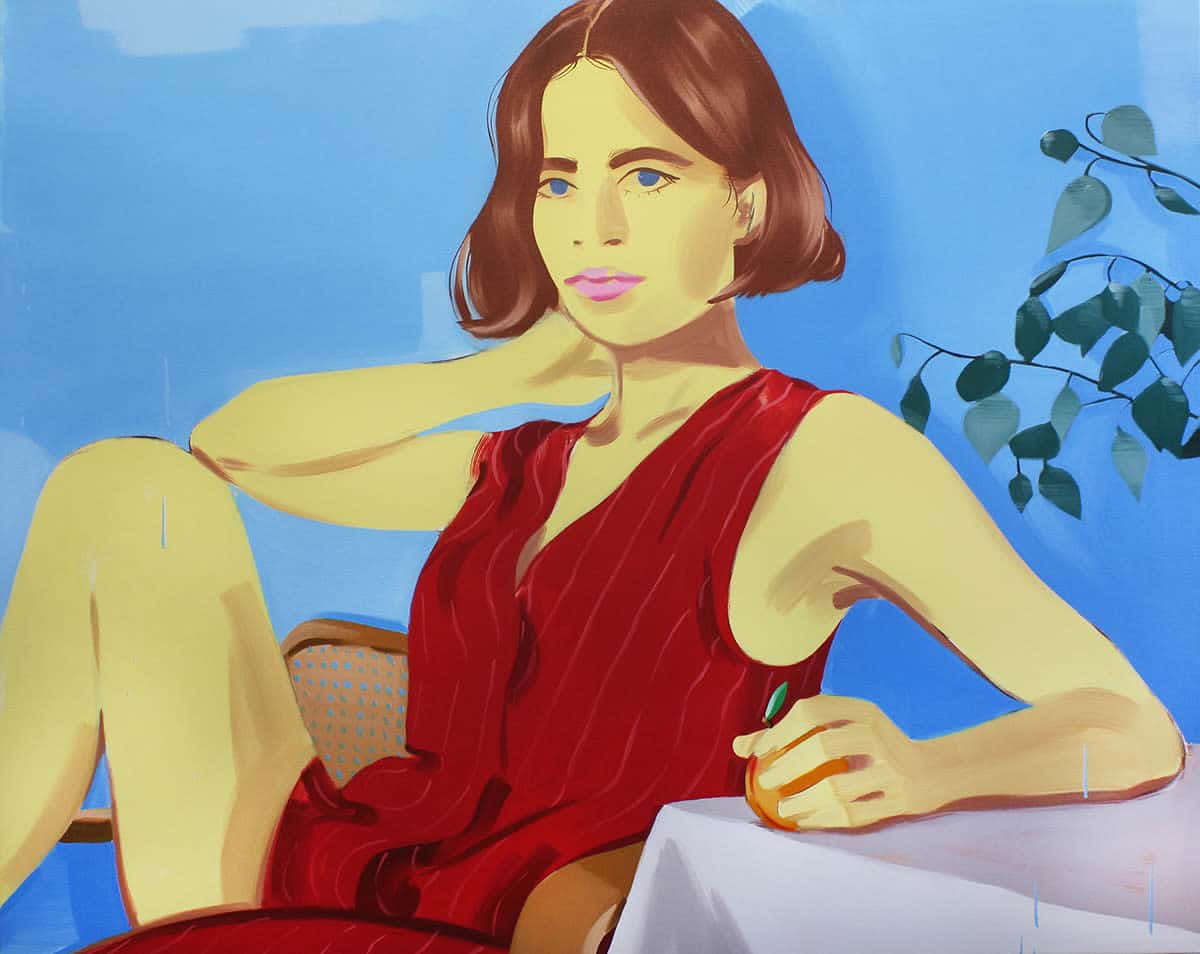
Girl, Alone With Peach, 2018.
How did you come up with the title for the show?
The show is called I Like For You to be Still, which is taken from a Pablo Neruda poem by the same name. The poem is about this woman who is his muse, or his lover, and he’s sort of describing her like this object who is set apart. He admires her, but she’s kind of this aloof, frozen object.
For me, it was about taking that muse figure, which has been at the centre of art, and painting specifically—for centuries—and flipping it. Making her in control, giving her that sexual gaze to cast back at the viewer.
I think the colours in these new paintings are powerful. They call attention to themselves in that same way of the selfie that you were describing.
Exactly. And they are bright, but I don’t think they are happy. It’s all about striking a balance. Using unconventional colours helps to neutralize the subject in a way and avoid specificity. If you’re using recognizable skin tones or expected hair colors, it’s so much more specific. Using lavender and reds, it’s more universal.
I want it to be relatable for women. I want the show to be relatable and non-exclusive; I want all women, all people, to be able to relate to it. We’re in our bodies for such a short period of time. All of us have this thing in common, that we’re tied to our body and experience and we’re just trying to work through it.
Find more of Sarah Letovsky’s work at her website, built using Format.
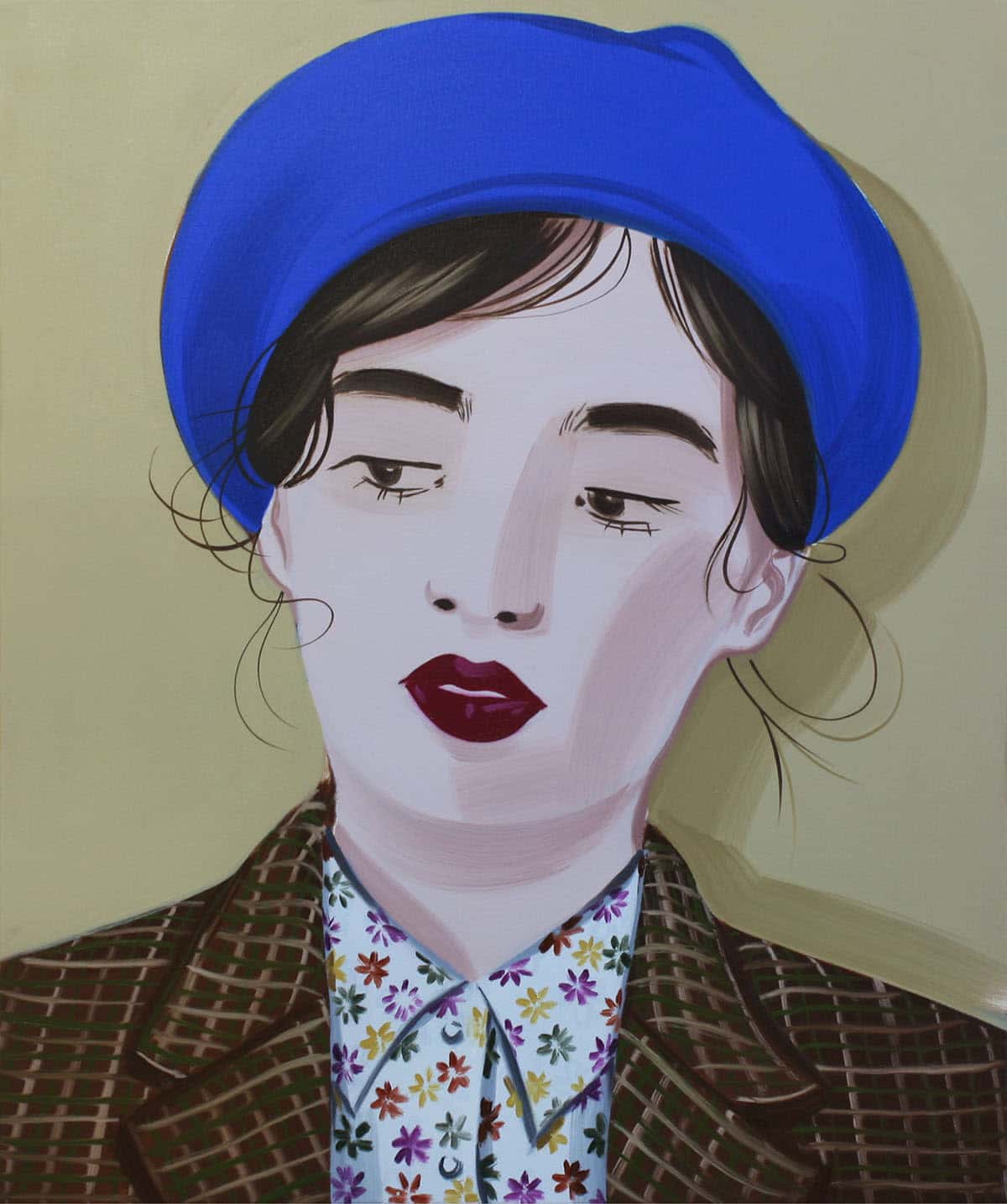
Girl in Tweed.
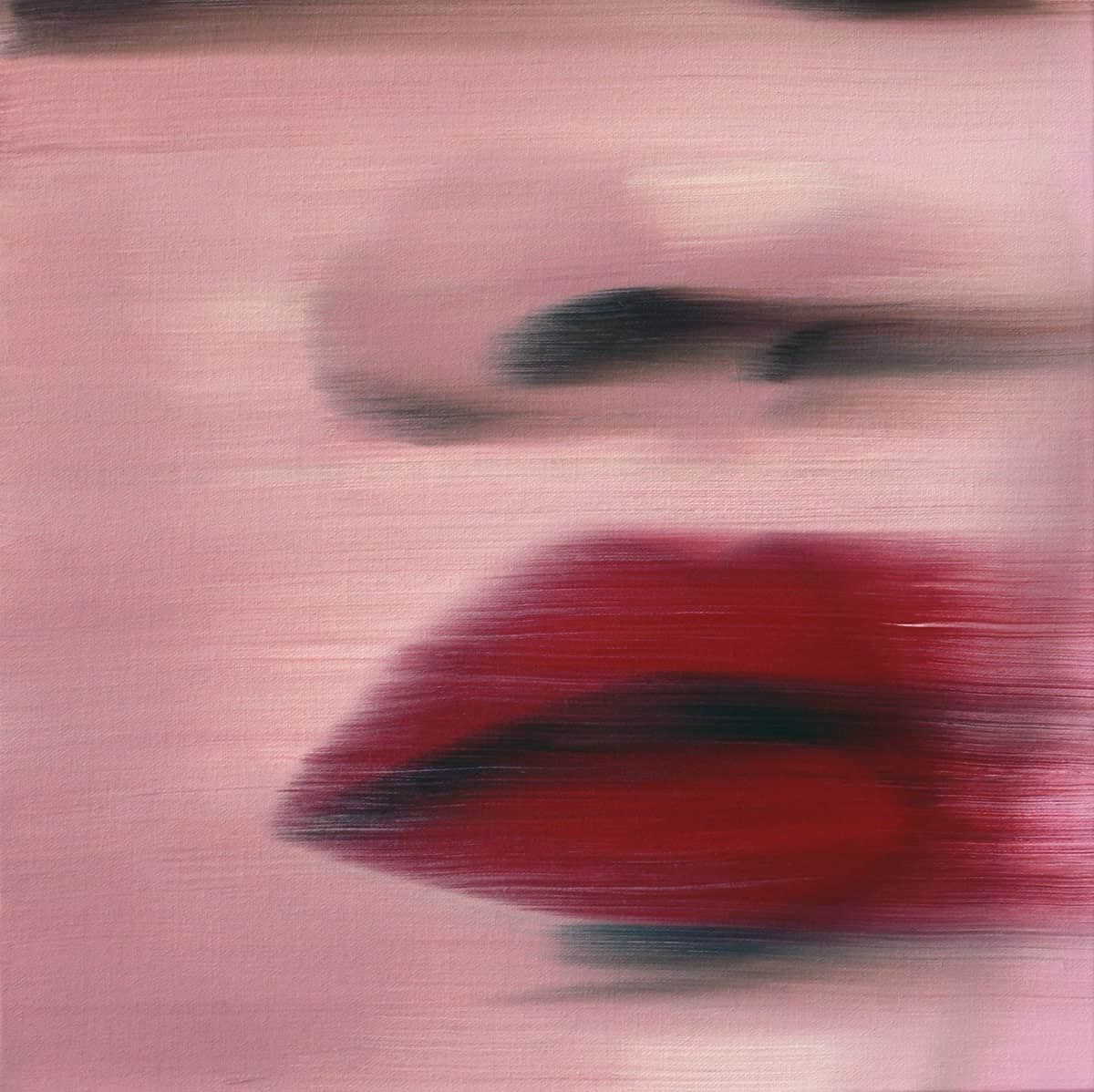
Red Lips, 2018.
More on painting:
Julie Beugin’s Paintings Make Space for Speculation
“Sometimes I Just Like to Paint Sex”: An Interview With Kristen Liu-Wong
20 Contemporary Painters With Gallery-Worthy Portfolios
Cover: Wish You Were Here. All images courtesy of the artist and Project Gallery.
